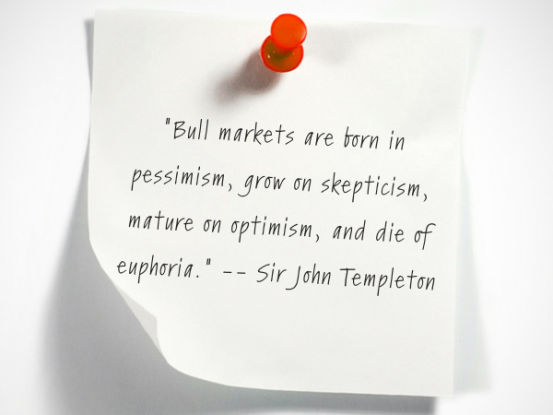 Got a note this morning from a friend about our opinions on several Singapore Oil & Gas companies. So we thought this would be a good opportunity to touch on a related topic.
Got a note this morning from a friend about our opinions on several Singapore Oil & Gas companies. So we thought this would be a good opportunity to touch on a related topic.
The present market sentiment on the O&G sector is certainly not short of depressing. Driven partly by broad market declines but largely by falling oil prices.
In a not too distant memory, oil was trading for a consecutive 50+ months in the $85-$100 range. Back then, almost everyone sees these prices as at least sustainable, if not, bullish …
“There is a new reality in our business… $100/bbl is becoming the new $20/bbl in our business… costs have caught up to revenues for many classes of projects … If $100 is the new $20, consumers will pay more for oil”
— John Watson, CEO Chevron at 2014 IHS Energy Conference
“The Brent crude oil price is projected to average $105/bbl and $101/bbl in 2014 and 2015, respectively …. EIA expects that WTI crude oil prices will average $93/bbl in 2014 and $90/bbl during 2015 … corresponding lower and upper limits of the 95% confidence interval were $82/bbl and $117/bbl”
— U.S. Energy Information Administration, Feb 2014 STEO
“… we anticipate that Brent will continue its appreciation to average around USD116.0/bbl in 2017 and USD125.0/bbl in 2020.”
— Infield, Research consultant for POSH IPO
… occasionally we do see some bears, small ones.
“Steve Briese, publisher and writer of the Bullish Review of Commodity Insiders newsletter, is currently projecting an imminent plunge in the oil price to the $70 region. His bearish outlook is based on the recent peak in the net short position of businesses involved with oil. ”
— Barron’s, “Here comes $75 oil”, Mar 2014
“… we remain bearish on crude oil prices. Barring geopolitical wildcards and significant production hiccups, we look for WTI and Brent touch $85/bbl and $95/bbl respectively at end- 2014.. ”
— OCBC, “Commodities Outlook 2014”, Jan 2014
This is not an exercise of criticism, instead, we want to highlight the predominant sentiment that governs the O&G market at that point of time — that when oil price was trending consistently higher in the $100+ region, its unimaginable to see a 60% crash.
“There got to be new data that supported the crash?” You might ask.
Absolutely there are.
But the fact is that majority of the arguments that supported the crash are there when oil price was $100 as they are today at $40: Shale boom, slowing global economy, stronger dollar etc.
It is true that supply is more than demand. It is also true that price should fall if we have more oil than we need. But what is the right price? Surely most would have an opinion but certainly no one knows.
What we do know is that as the days go by, Mr. Market wants nothing to do with this trade. For this reason alone, it is worth a second look by the intelligent investor.


Pingback: Oil: An Update on Market Psychology | hsquare capital